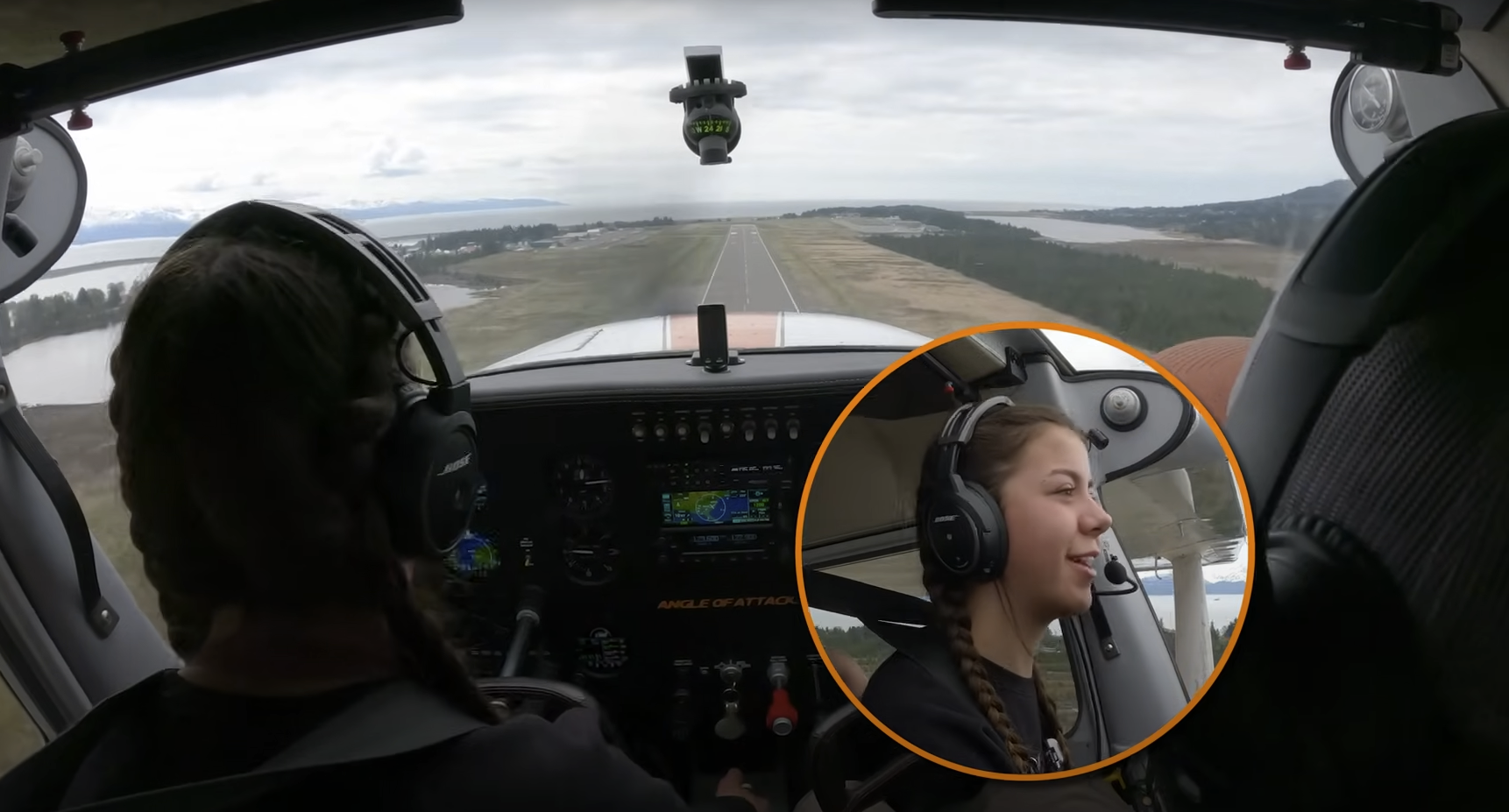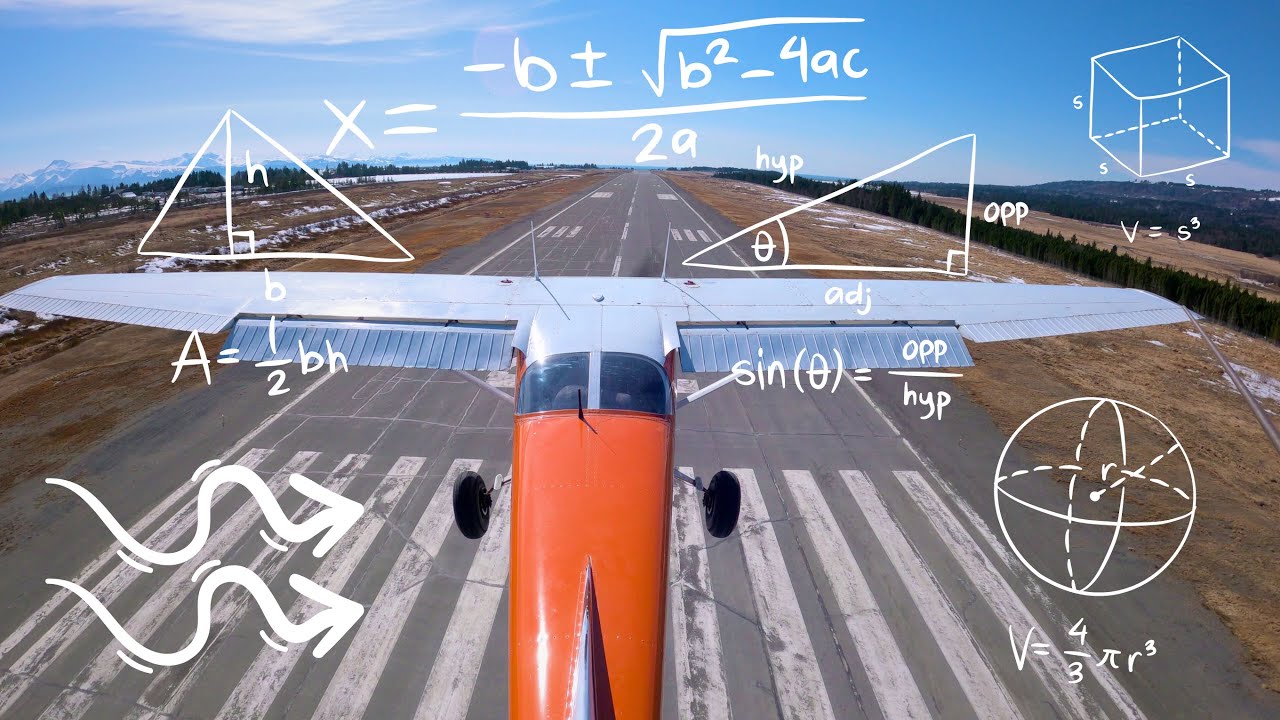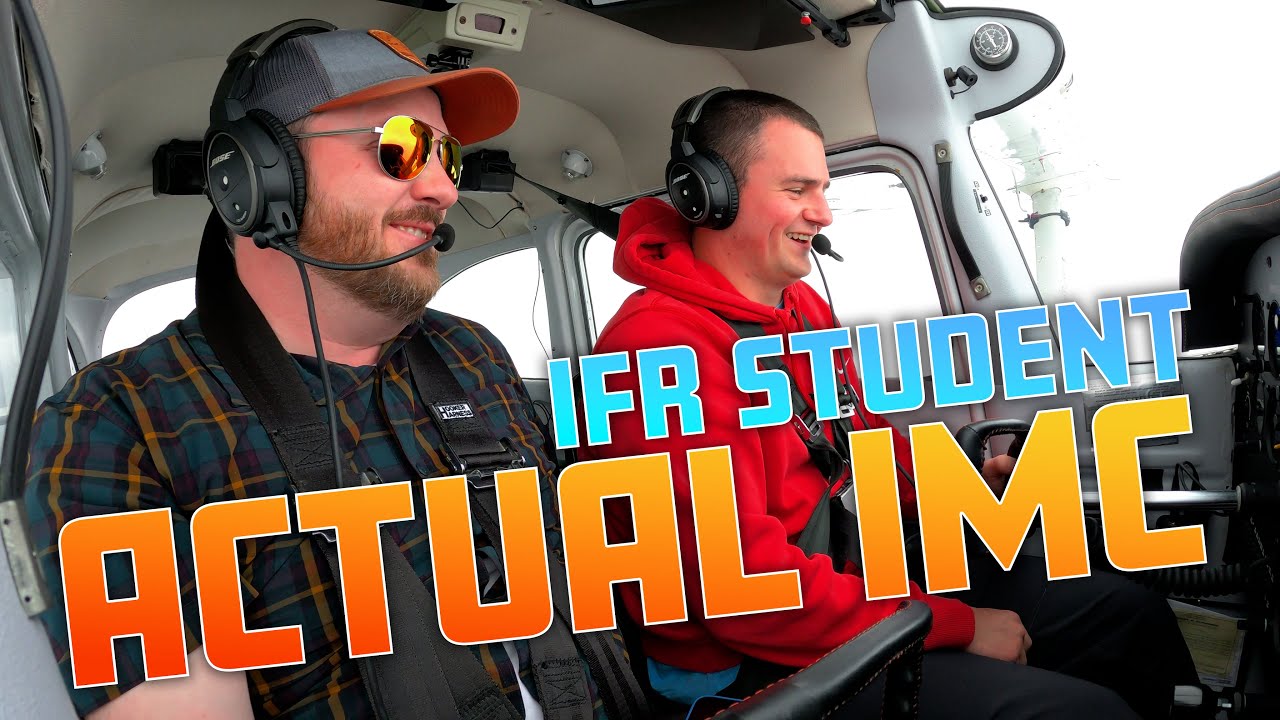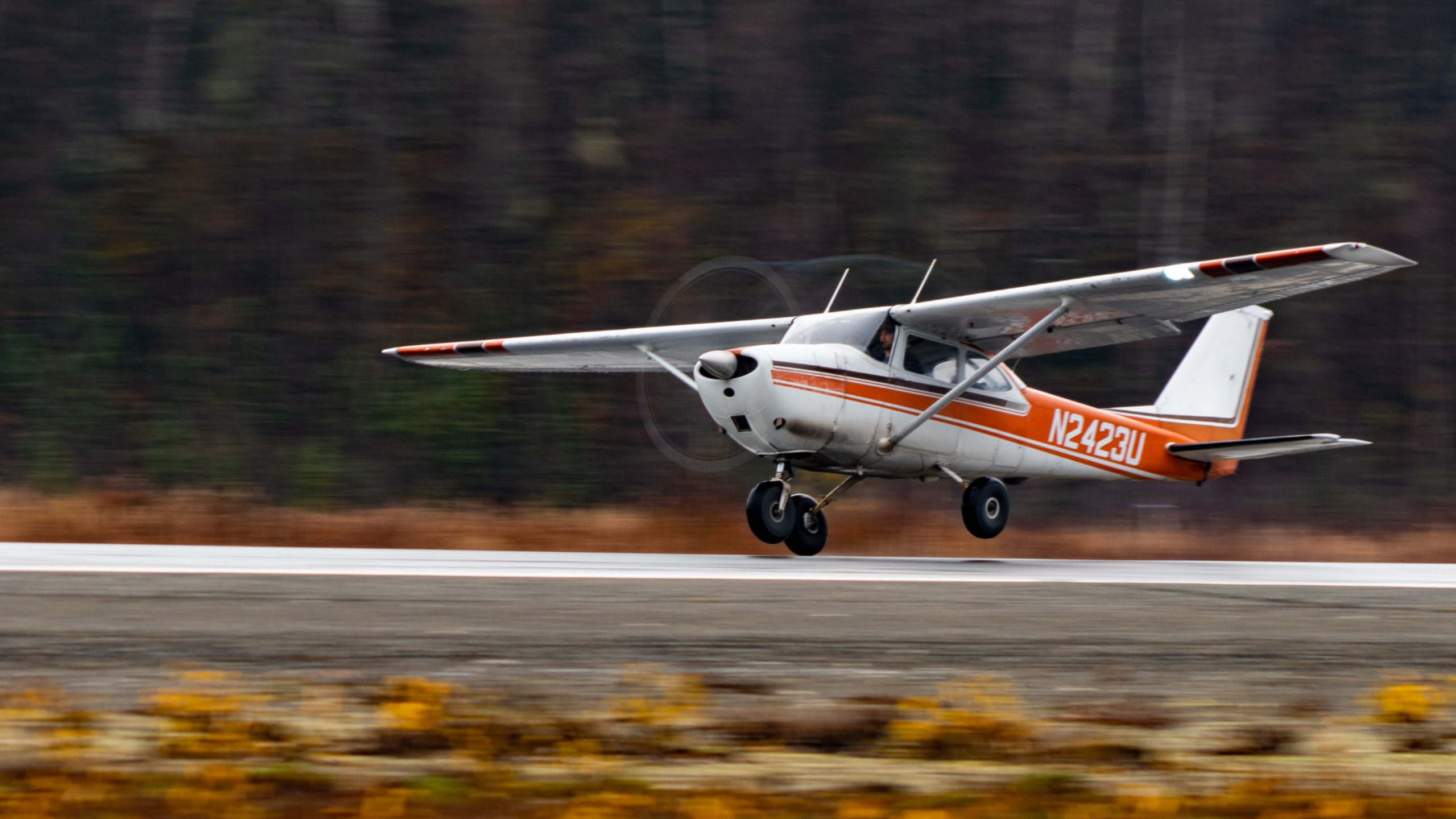
Landing an aircraft isn’t as difficult as it seems. In this video we’ll be going over a Normal Landing, which is a landing without many other circumstances challenging us. We’ll have a nice angle down to the runway at about 3º, we’ll maintain a little bit of power along the way, and we’ll try to land on a spot.
A good landing happens first and foremost because of a stable and well setup approach. If you come screaming into the airport too high and too fast, it’s not likely you’ll make a successful or safe landing.
Therefore, learning to fly the pattern well, keeping the airplane flying almost hands off the whole time, and managing your power will be paramount.
Often a landing is more about what you DON’T do than what you actively do.
For example, very little movement with the aileron is needed to maintain our centerline with the runway. Once we have a crab angle set, our power set and trim setup nicely at our approach speed, you can almost literally fly hands off all the way down to the runway.
Flaps help us slow down with some extra drag, it changes the shape of the wing to produce more lift, and allow us a better view of the runway as we’re on approach.
In the download I do 2000RPM, one notch of flaps, and that gives me 80MPH (roughly 70KTS). Setting the power and flaps early gives me time to plan the approach and fly the pattern well. It also gives me time for the CGUMPS checklist.
We’ll fly on downwind to the base turn without changing altitude or power.
On the turn to base, start drawing back the power. Try 1500RPM initially. In the turn, make the radio call and have your power reduction done before you roll out.
Rolling out of the turn on base, make sure that your nose hasn’t changed pitch. That means that you’ll have back pressure now, so trim accordingly to get rid of those pressure.
Add your next (2nd) notch of flaps.
Now you have a view of the runway. Are you high? Are you low? Are you fast? Are you slow? Too high? Reduce power. Too fast? Increase pitch and reduce power. Too low? Increase pitch and see what the speed does. If the speed gets unsafe, add power. The base leg is a great time to judge where you’re at, and make the necessary changes to keep the approach stable and useful. The faster you can get back on track, the better.
Before turning final, check the final approach for any other aircraft that aren’t using the radio, or to simply clear your path.
Turning final, stay nice and coordinated, at a speed of about 70MPH minimum. If you overshoot your turn to centerline, fight the urge the correct the aircraft aggressively. Keep the bank shallow and normal, and just work your way back to centerline. We want to avoid getting into a potential spin at this low speed, high drag, high angle of attack situation.
Now the magic happens on final. Your main flight control is the power. If you’re on glideslope and on speed, it’ll just take a finest of power movements to find that sweet spot that will keep our flying energy (airspeed) and bring us down to the target we want on the runway.
You’ll notice as you add power, your vector will move FURTHER down the runway. That’s because you’re shallowing out your angle by adding more power, staying in the air longer. If you need to move the target closer to you, reduce power.
Visualizing and seeing the smallest of movements of that target on the runway takes some time to perceive. Catch it early, make small adjustments with power, and try and fly that glide slope all the way down on speed. We’re looking for about 70MPH on final approach course.
Do this until you’re at about 15-20 feet above the runway. At that point, the visual cues completely change. That’s why you now move your eyes to the far end of the runway and try and perceive your ‘sink’ to the runway out of your peripherally vision.
That initial back pressure that takes us out of the steeper descent is called the roundabout. It takes us from the steep angle, to a manageable landing angle so we can set down more soft. Land at this roundabout angle and you won’t hurt the airplane.
However, we want to make the touchdown kinda soft, right? Impress our passengers? That’s why we do the flare. The flare gets rid of those last bits of flying energy so we settle on nice and soft if possible.
Imagine pulling back on the yoke, and adding more and more pressure in those few seconds before touching down. The goal is basically to hold the airplane a foot or two off the ground as long as you possibly can.
Set down the wheels and now FINISH.
Maintain alignment with the runway with the rudder, just as you did on takeoff. Add aileron into the wind if needed. Come to a stop or roll out, whatever makes sense for what’s next (pulling off the runway or doing another touch and go).
That’s it! Hope you enjoyed your ‘first landing’.
Chief Flight Instructor and President of Angle of Attack. Founded in 2006.

Stay Connected
Be the very first to get notified when we publish new flying videos, free lessons, and special offers on our courses.





